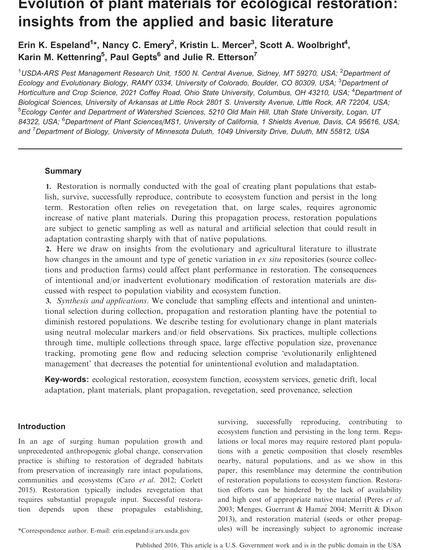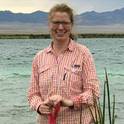
Article
Evolution of plant materials for ecological restoration: insights from the applied and basic literature
Journal of Applied Ecology
(2017)
Abstract
Summary
1. Restoration is normally conducted with the goal of creating plant populations that estab- lish, survive, successfully reproduce, contribute to ecosystem function and persist in the long term. Restoration often relies on revegetation that, on large scales, requires agronomic increase of native plant materials. During this propagation process, restoration populations are subject to genetic sampling as well as natural and artificial selection that could result in adaptation contrasting sharply with that of native populations.
2. Here we draw on insights from the evolutionary and agricultural literature to illustrate how changes in the amount and type of genetic variation in ex situ repositories (source collec- tions and production farms) could affect plant performance in restoration. The consequences of intentional and/or inadvertent evolutionary modification of restoration materials are dis- cussed with respect to population viability and ecosystem function.
3. Synthesis and applications. We conclude that sampling effects and intentional and unintentional selection during collection, propagation and restoration planting have the potential to diminish restored populations. We describe testing for evolutionary change in plant materials using neutral molecular markers and/or field observations. Six practices, multiple collections through time, multiple collections through space, large effective population size, provenance tracking, promoting gene flow and reducing selection comprise ‘evolutionarily enlightened management’ that decreases the potential for unintentional evolution and maladaptation.
Disciplines
Publication Date
2017
DOI
doi: 10.1111/1365-2664.12739
Citation Information
Espeland, EK et al. 2017. Evolution of plant materials for ecological restoration: insights from the applied and basic literature. Journal of Applied Ecology 54(1):102-115. doi: 10.1111/1365-2664.12739
